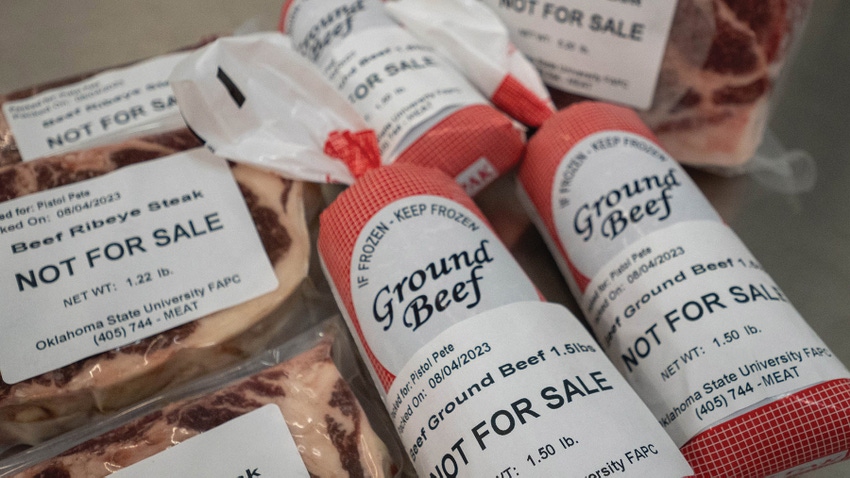
As more consumers seek locally sourced products to connect with the land, many farmers and ranchers are stepping up to meet demand.
The market for direct-to-consumer beef has grown substantially during the past decade, sustaining the need for processing facilities. COVID-19 fueled even more business for processors, and Oklahoma’s regulatory agency took notice.
“In 2019, we had roughly 20 inspected plants across the state, and now we’re up over 30,” said Scott Yates, director of the Food Safety division at the Oklahoma Department of Agriculture, Food and Forestry. “We had 15 inspectors in 2019, and we just hired the 30th a few weeks ago.”
Educating ranchers and buyers
The industry is experiencing significant growth, but starting as early as the 1970s, processing plants were in decline in Oklahoma communities as people retired from the trade. Children chose other career paths over the family business, and many facilities closed their doors for good, Yates said. Meat consumers began to connect with producers, but the custom processing business had its seasonal ebbs and flows.
However, the pandemic gave mom-and-pop facilities another chance. Joel Jackson, pilot plant manager at the Oklahoma State University Robert M. Kerr Food and Agricultural Products Center, said that by May 2020, custom processing orders were through the roof.
“In April and May of 2020, when the big plants started shutting down, you couldn’t walk into a grocery store and get what you wanted,” he said. “If you didn’t have a freezer full of meat, that made people nervous.”
Processors were quickly booked through the end of the year into 2021 and even 2022. By the end of 2020, cancelations began popping up, but Jackson said the overall panic of a tight meat supply changed consumers’ habits.
“People who had never had an animal processed before asked producers if they could buy one,” he said. “For first-timers, it led to a big learning curve and an opportunity for education by producers and processors.”
Jackson wrote an OSU Extension fact sheet that details the basics of animal processing, including why a 1,000-pound steer will not produce 1,000 pounds of meat, how to select cutting instructions and what cuts are available. The information is not only valuable to the buyer but also to those ranchers who might be new to custom processing.
“If you’re going to sell beef, you should be familiar with what to expect on a side, quarter or whole animal in terms of yields,” Jackson said. “You’re going to get asked all those questions. Most people aren’t going to pay $1,000 to $3,000 if they don’t know what they’re going to get.”
Jackson and his colleagues are offering learning opportunities for producers interested in direct-to-consumer meat sales with two workshops in August and September. Ranchers will learn about the regulatory aspects of the business, including what type of processor is required for each type of sale.
“If you want to keep it simple, pre-selling your livestock is the best option,” Jackson said. “Custom exempt processing removes the need for inspection, permits and even label approvals. It’s just like you’re selling a live animal to a neighbor or family member, and it can be processed at a local custom plant.”
For those who want to take their beef business to the next level and sell meat at local stores or farmers markets, the workshops will cover state and federal meat inspections, proper permitting, labeling and other associated regulations.
“If you’re storing inspected meats that will enter into commerce, you’ll need to register with the state,” Jackson said. “We’ll give you everything you need to know to start selling product and make sure you’re doing it right.”
Read more about:
BeefAbout the Author(s)
You May Also Like




